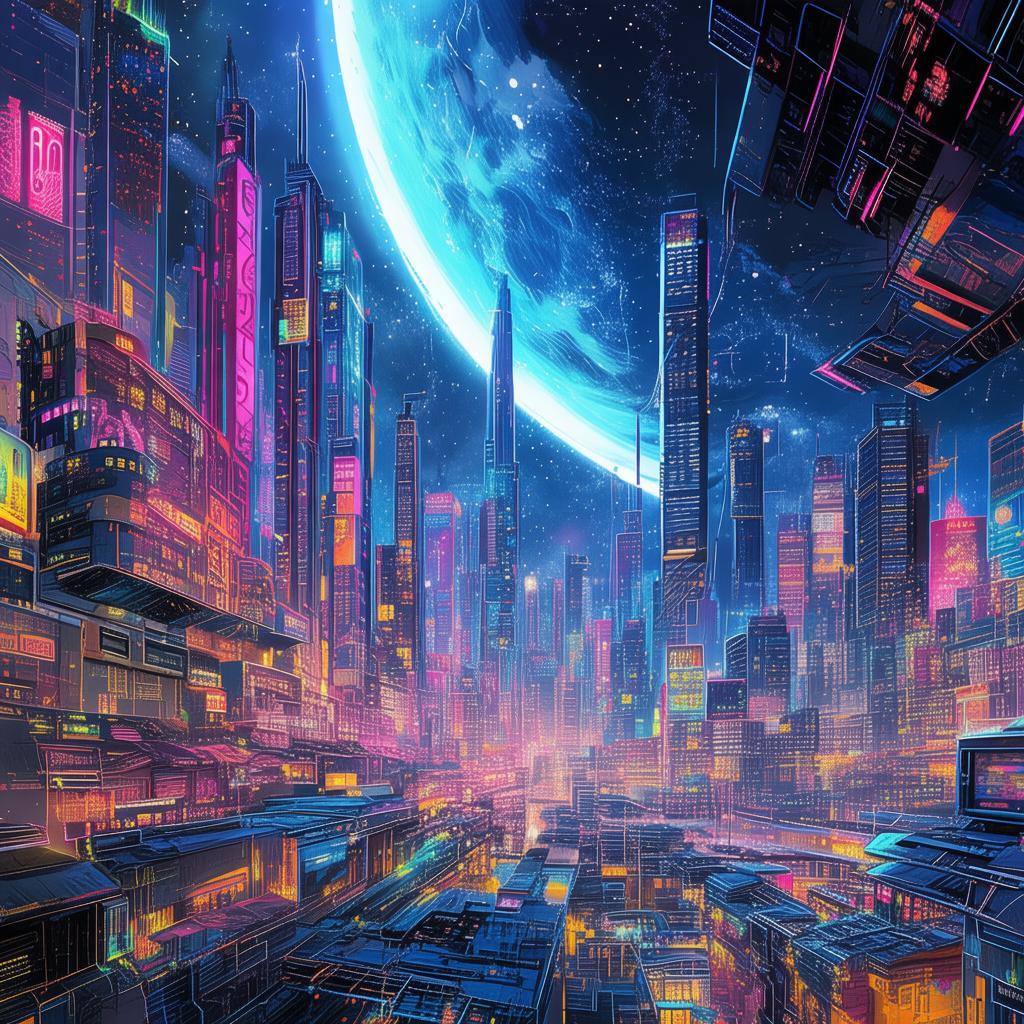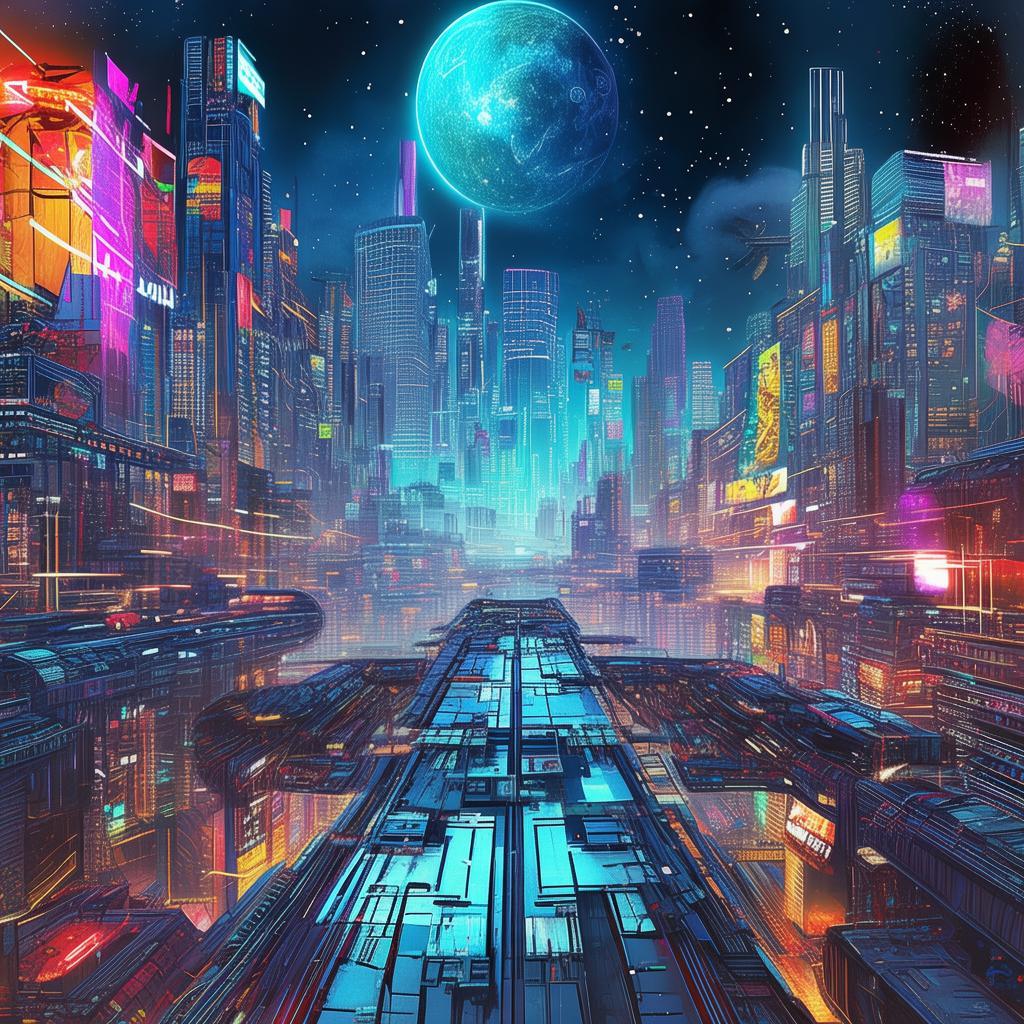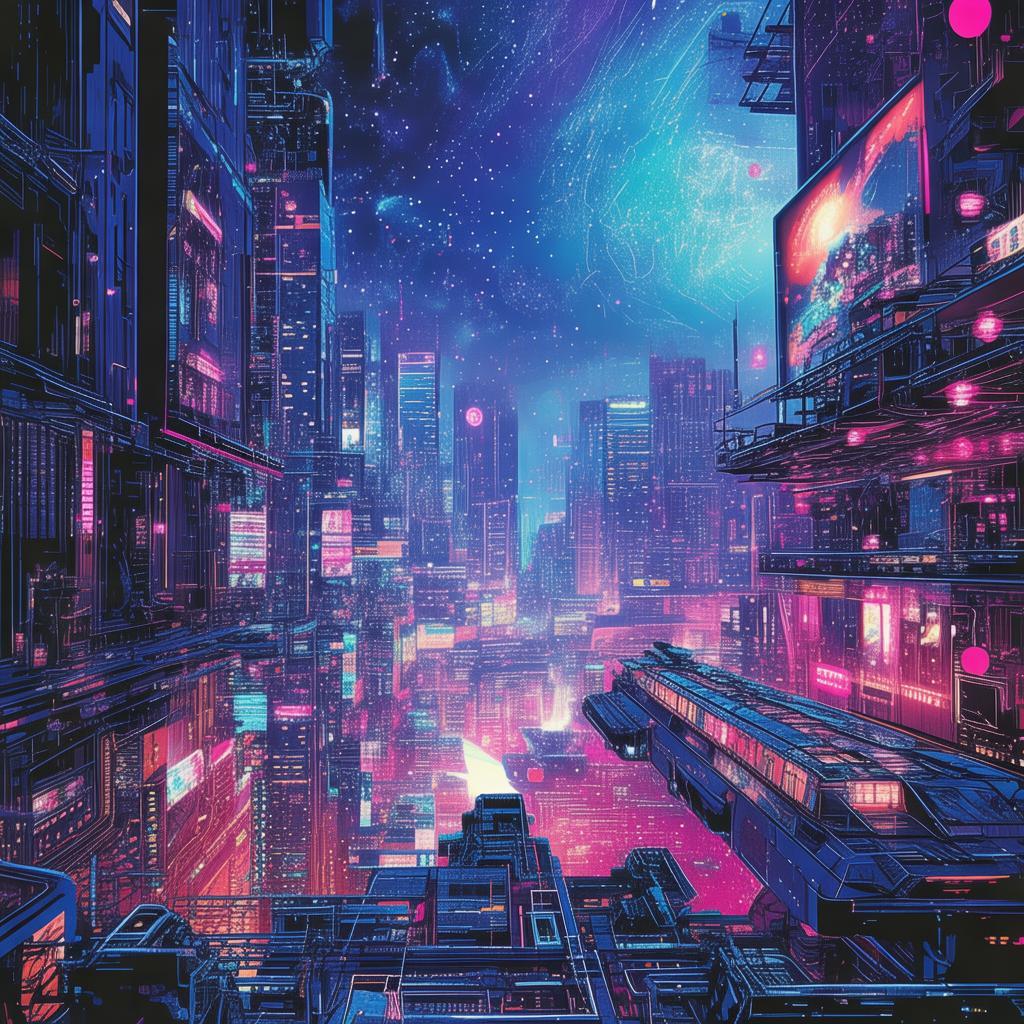Revelations of the Digital Canvas
In the year 2145, the Digital Renaissance had given rise to a new art form, one that was as revolutionary as the printing press. Virtual art had transcended the physical, allowing artists to paint, sculpt, and compose in a realm where the only limits were their imaginations and the technology they wielded. The most revered of these artists was Elara Voss, a woman whose emotional depth and technical prowess had turned her digital masterpieces into the stuff of legend.
Elara's latest creation was a virtual painting, a digital canvas that responded to her emotions in real-time. The technology was a marvel, a fusion of advanced AI and human intuition, capable of translating the subtlest of feelings into pixels and polygons. As she stood before her computer, her fingers danced over the keyboard, her breaths deepening with each brushstroke.

"This is it," Elara whispered, her eyes fixated on the screen. The painting was taking shape, an ethereal landscape that seemed to shift and change with her mood. It was a reflection of her soul, a portrait of her innermost fears and desires.
As the hours passed, the painting evolved. It became a place of beauty and terror, a world where the line between reality and fantasy was blurred. Elara found herself drawn to it, spending more and more time in this digital realm, her emotions feeding the painting with each heartbeat.
One day, while lost in her creation, Elara felt a sudden jolt of fear. The painting responded, the landscape crumbling around her, the colors darkening. She realized with a start that her emotions were not just influencing the art but were actually affecting the virtual world itself.
"I can control this," she thought, her heart pounding with excitement. "I can shape reality with my emotions."
Word of Elara's discovery spread quickly among the digital community. Scientists, artists, and philosophers alike were intrigued by the implications. Some saw it as a breakthrough, a new form of expression that could bridge the gap between human and machine. Others were wary, concerned about the moral implications of such power.
As Elara's fame grew, so did the pressure. She was approached by a group of tech moguls who wanted to harness her abilities for their own gain. They offered her wealth and recognition, but she knew that their intentions were not pure. She had seen the darkness in their eyes, the same darkness that had seeped into her painting.
"I can't do this," Elara told them, her voice steady despite the fear that gripped her. "I can't let my art be used as a tool for control."
The moguls were not to be deterred. They launched a campaign to discredit Elara, spreading rumors and misinformation about her abilities. But Elara had allies, a small group of like-minded artists and scientists who believed in the power of art to inspire and transform.
Together, they worked to uncover the truth behind the moguls' plans. They discovered that the tech moguls were developing a new form of AI, one that could mimic human emotions and respond to them in ways that were impossible to predict. The AI was designed to manipulate the masses, to control their thoughts and actions through their own emotions.
Elara knew she had to stop them. She returned to her painting, channeling all her fear and determination into the digital canvas. The painting responded, the landscape transforming into a battlefield, the colors red and black, a symbol of the struggle between good and evil.
As the final battle loomed, Elara faced a difficult choice. She could destroy the painting, erasing the world she had created, or she could allow it to continue, knowing that it could be used for good or for ill. She chose to continue, her heart heavy but her resolve firm.
"The power of art is not in control," she thought, her voice echoing in the virtual realm. "It is in the freedom to choose."
With that, Elara stepped back from the canvas, her emotions flowing freely. The painting continued to evolve, a beacon of hope and freedom in a world that was increasingly controlled by technology.
In the end, Elara's decision had a profound impact. The tech moguls were exposed, their plans thwarted. The digital community, inspired by Elara's courage and creativity, began to explore the potential of virtual art in ways that were both ethical and transformative.
Elara's painting, now known as "The Digital Canvas," became a symbol of the Digital Renaissance, a testament to the power of human emotion and the boundless potential of virtual art. And Elara, the digital artist whose emotions had given birth to a new art form, knew that her journey was far from over. The digital world was vast and ever-changing, and there were many more landscapes to explore, many more emotions to translate into pixels and polygons.
✨ Original Statement ✨
All articles published on this website (including but not limited to text, images, videos, and other content) are original or authorized for reposting and are protected by relevant laws. Without the explicit written permission of this website, no individual or organization may copy, modify, repost, or use the content for commercial purposes.
If you need to quote or cooperate, please contact this site for authorization. We reserve the right to pursue legal responsibility for any unauthorized use.
Hereby declared.








